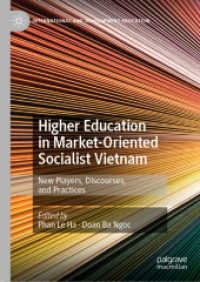- ホーム
- > 洋書
- > 英文書
- > Computer / Languages
Full Description
Chapter 3 discusses the solution design space to address the identified research gap and introduces person-oriented framing analysis (PFA), a new approach to identify substantial frames and to reveal slanted news coverage.








